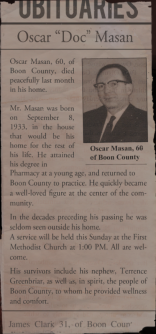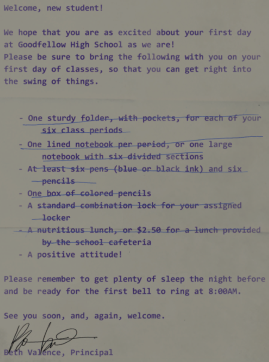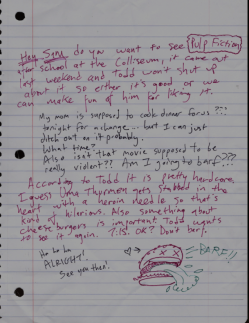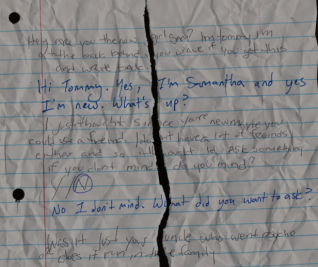Sidequest 3: Oregon Trails
I have just downloaded the game “Gone Home” on my computer and am now ready to begin my quest. I will be live blogging my journey through the game and the assignment directions are explained in this link: https://eng101s20.davidmorgen.org/quests/side-quests/side-quest-3-liveblogging-gone-home/ .

The game begins by setting the atmosphere and tone for the game. I immediately sense the intensity by examining mysterious items and trying to gain entrance into the house. The porch is lit poorly and I am having trouble looking at some things because the game as a whole is very dark. I am able to see the lights flickering through the windows and hear the torrential rain pouring down the outside of the house. To gain entry into the house, I found a key to unlock the door and was able to get inside the house, but I realized no one was home. Playing the game in the first-person narrative makes me feel like I am in the game and allows me to understand the character’s confusion and emotions. In addition, being able to pick things up and examine the little details of notes and objects will help me stay connected to the game. Kaitlyn’s bag shows she travels across the world, so this may be foreshadowing that she will have to be adventurous in the game story line. I predict that the rest of the game will be trying to understand what is happening in the house and where everyone went after reading the note from Sam.






I loved the interactive and personal feel of the game. I felt like I was Kaitlyn and Sam at times in the game and that I was able to understand what they were thinking at every point in time. Turning on every light and reading any documents I could find was tedious, but it made me feel like a detective. In the end, I was still left confused and trying to connect some points because I may have missed a room or an object in the room. The dark background, sound effects, and ability to control everything helped me a lot and allowed me to examine everything on my screen. Overall, this gaming experience was enjoyable, but I am left curious to learn more about why everything happened.










